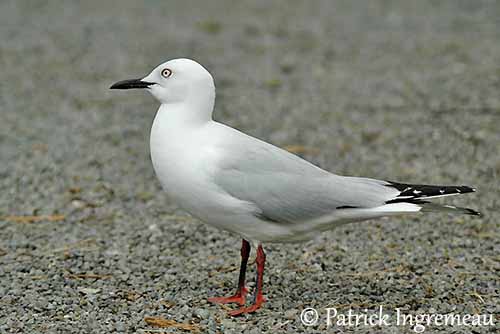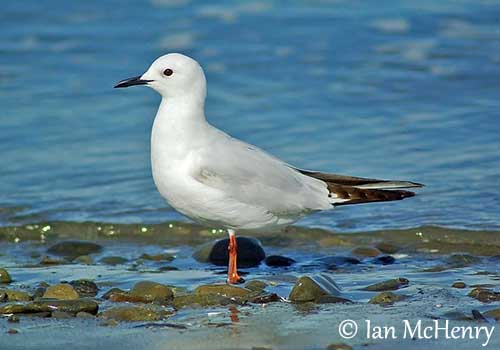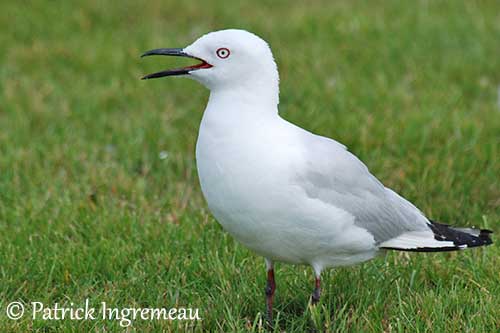
Fr: Mouette de Buller
Maori: Tarapunga
Ang: Black-billed Gull
All: Maorimöwe
Esp: Gaviota Maorí
Ita: Gabbiano di Buller
Nd: Zwartsnavelmeeuw
Sd: Maorimås
Photographers:
Patrick Ingremeau
TAMANDUA
Ian McHenry
My New Zealand Birds
Text by Nicole Bouglouan
Sources:
HANDBOOK OF THE BIRDS OF THE WORLD Vol 3 by Josep del Hoyo-Andrew Elliott-Jordi Sargatal - Lynx Edicions - ISBN : 8487334202
KNOW YOUR NEW ZEALAND BIRDS by Lynnette Moon - New Holland Publishers – ISBN: 1869660897
BirdLife International (BirdLife International)
New Zealand bird status between 2008 and 2012
Te Ara – The Encyclopedia of New Zealand
New Zealand birds and birding (Narena Olliver)
Black-billed Gull
Chroicocephalus bulleri
Charadriiformes Order – Laridae Family
INTRODUCTION:
The Black-billed Gull is endemic to New Zealand. It is mainly found on inland freshwater rivers and lakes, and it frequents the coasts only during winter.
This species is classified an Endangered. They suffer a wide variety of threats, the major one being the predation by introduced mammals. But changes in their habitat, use of pesticides and herbicides, and human disturbance at colonies involve population decline.

DESCRIPTION OF THE BIRD:
Biometrics:
Length: 35-38 cm
Weight: 230 g
The adult in breeding plumage has pale grey back and wings. Head, neck, rump, tail and underparts are white. On the wings, the white outer primaries have black margins and small white tips.
The bill is black with red-orange gape. The eyes are white, surrounded by narrow red eyering. Legs and feet are black, becoming bright red towards the end of the incubation and the hatching.
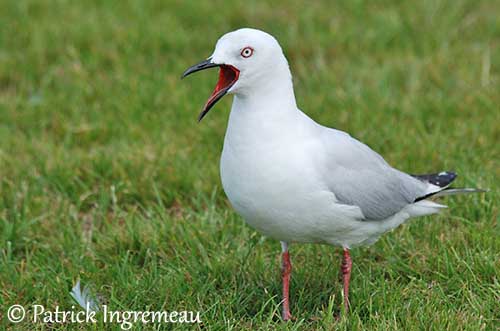
The non-breeding adult has two-tone bill, with reddish base and black tip. Feet are blackish with orange markings.
During autumn and winter, all ages may show a grey patch above, below and in front of the eye.
The juvenile has some grey-brown on crown and ear-coverts, white tail with sometimes grey-brown subterminal band, pale grey wings with brownish terminal margins.
The bill is pale pink with grey-black tip. The eyes are black with grey-black eyering. Legs and feet are pale pink.
The immature has grey eye with black eyering, pinkish-red bill with dark tip and pinkish-red legs and feet, sometimes almost orange.
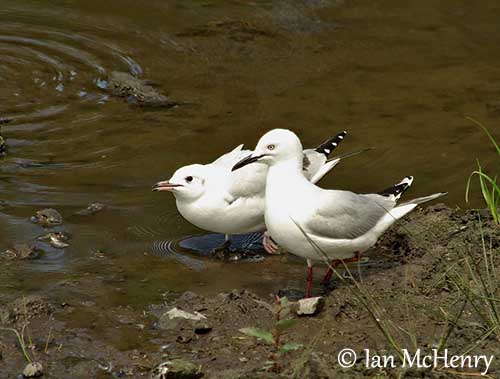
RANGE:
The Black-billed Gull breeds mainly on the South Island, on Mataura, Oreti, Aparima and Waiau rivers. Only 5% of the population breeds on the North Island, mainly on the shores of the Lake Rotorua, but also on coastal areas.
Most birds from the South Island migrate to the coast after the breeding season.
HABITAT:
The Black-billed Gull breeds usually on inland riverbeds, on sparsely vegetated gravels. On the South Island, the colonies are established on braided rivers and occasionally on adjacent farmland after important floods.
In the North Island, they usually nest on coastal shell banks and sandspits.
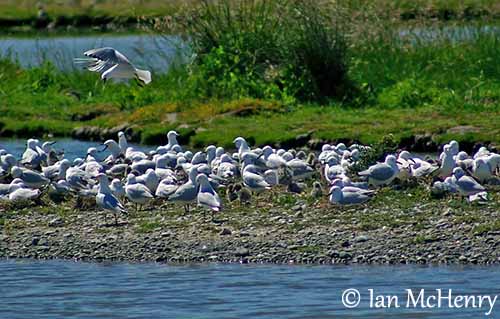
CALLS AND SONGS: SOUNDS BY XENO-CANTO
The Black-billed Gull gives high-pitched calls although less harsh than those of the Red-Billed Gull. At colonies, the gulls utter a continuous chatter.
BEHAVIOUR IN THE WILD:
The Black-billed Gull feeds primarily on freshwater fish and aquatic insects, various invertebrates and grubs. Worms and grubs are taken on cultivated areas, usually freshly ploughed. Aerial insects are caught by hovering above the water.
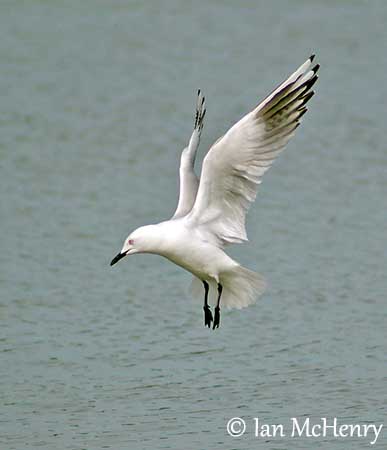
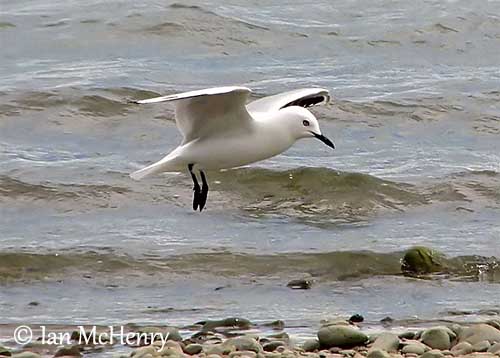
This species does not attack other nests, scavenge or take refuse dumps. When it reaches the coastal areas, it feeds mainly on crustaceans, molluscs and small fish.
They may feed in flocks on ploughed fields.
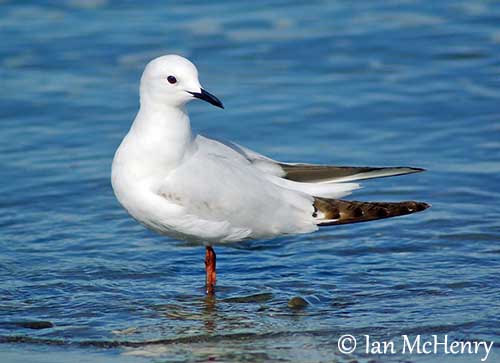
The Black-billed Gull breeds in dense colonies of which location changes from year to year. They often call at the colony, during courtship and pair-bond maintenance, territorial displays and nesting period.
The colonies are established in August-September. Like all Laridae, the Black-billed Gull is territorial and defends its small nest-site. Courtship displays are probably similar to those of other gulls, accompanied by calls. The most typical display is the “long call” often followed by a series of “head-tosses”. The birds toss their head up over the back while uttering a plaintive note. Courtship feeding from male to female is common.
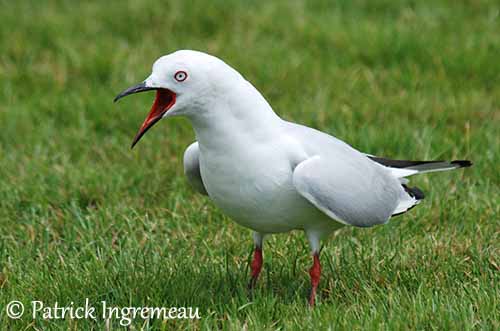
The Black-billed Gulls, adults and young, move to coastal areas after breeding. They migrate northwards, and some birds reach the North Island.
This gull is a good flier. It flies easily with powerful, fast wingbeats.
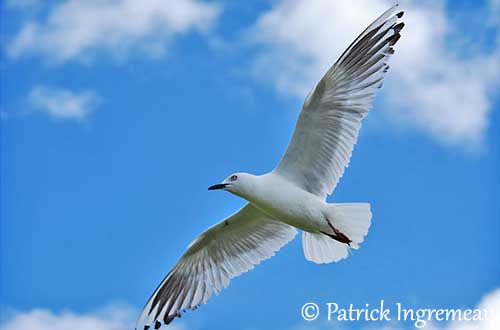
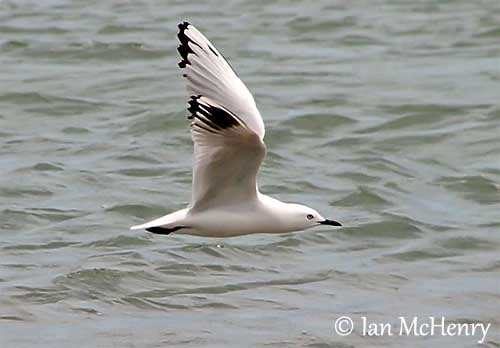
REPRODUCTION OF THIS SPECIES:
The laying occurs between September and December.
The Black-billed Gulls establish the colonies on shores of inland lakes and along shingle riverbeds. The nests are often built on islands, between two streams. The nest is made on the ground. This is a mound of dry seaweed and sticks, and the depression in the centre is lined with grass.
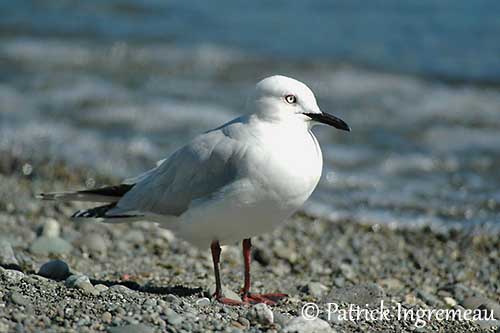
The female lays 2-3 cryptic eggs. Both adults incubate during 20-24 days. The chicks are fed by regurgitation onto the ground. They leave the nest about 26 days after hatching.
During the nesting period, the 10 days old chicks gather at crèches guarded by some adults. These crèches are usually near water, in order to provide an escape if the chicks are threatened by predators.
After fledging, they remain in family group with parents for several months.
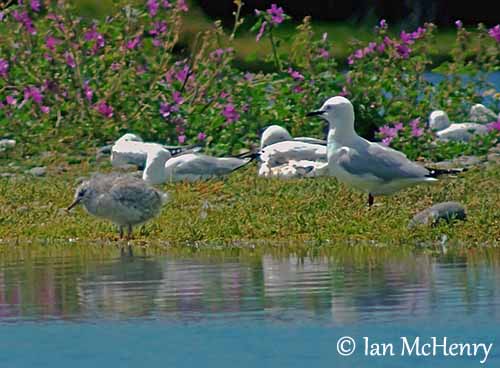
PROTECTION / THREATS / STATUS:
The Black-billed Gull is considered as Nationally Critical in New Zealand, and globally classified as Endangered species.
It is threatened by the introduced stoats, ferrets and cats which take eggs, chicks and adults. In addition, the Swamp Harrier also takes eggs and chicks.
The Kelp Gull often harasses them, and is the cause of abandonment of small colonies.
The nests are vulnerable to flooding. The gulls are affected by changes in their habitat, intensive farming, use of pesticide and herbicide, human disturbance and decline of marine food availability, due to oceanic warming.
The population was estimated at 90,000 mature individuals in 2008. The largest colonies are found in the South Island and often exceed 1,000 nests. However, the population is still declining.
